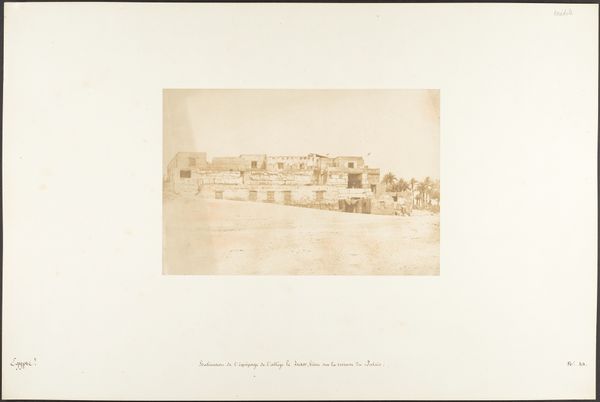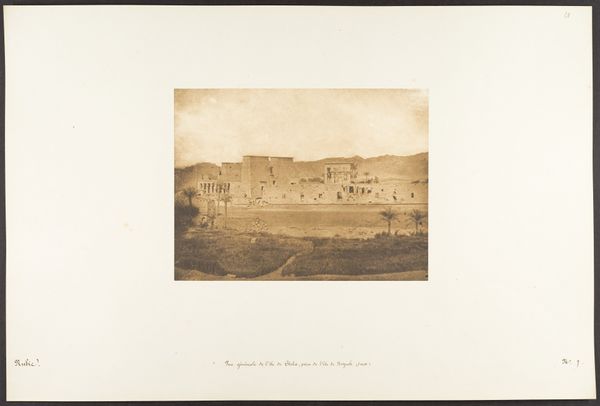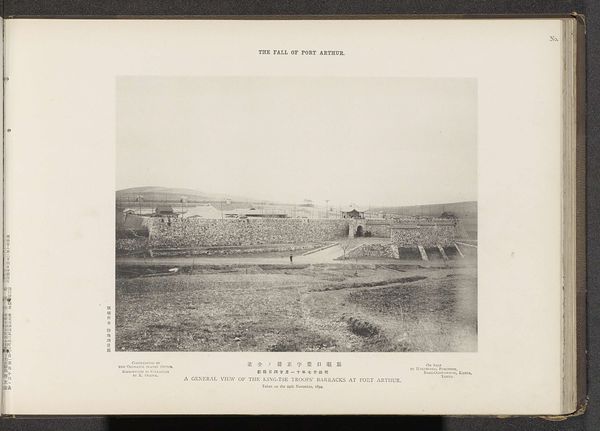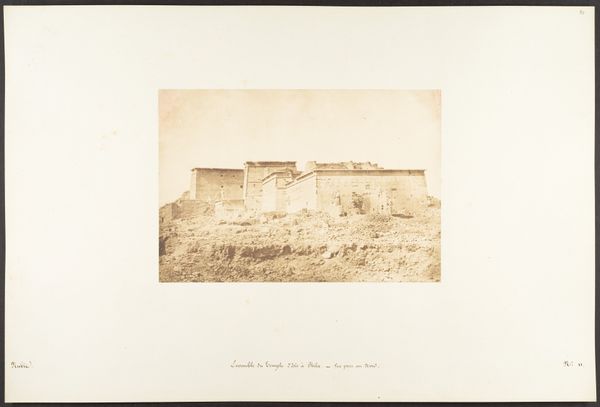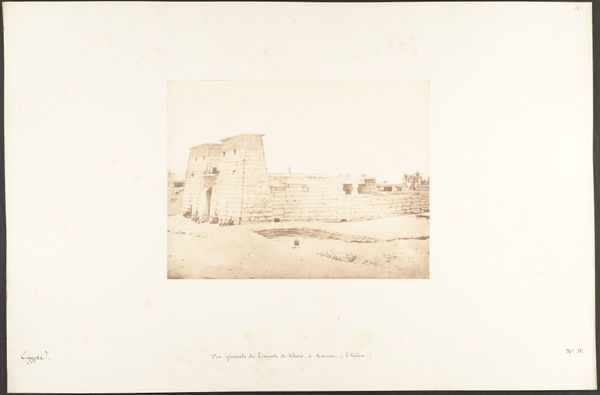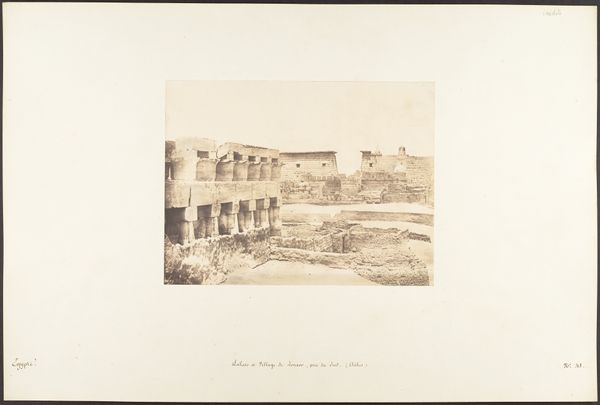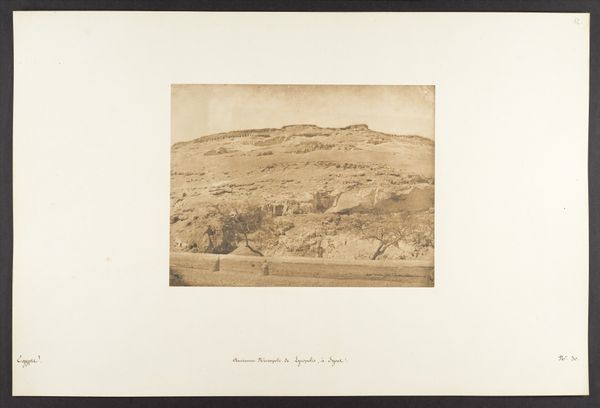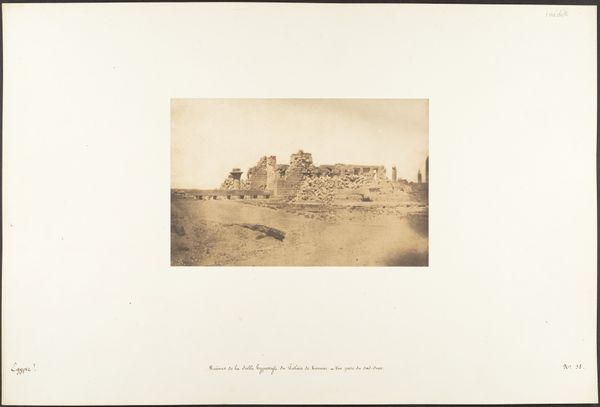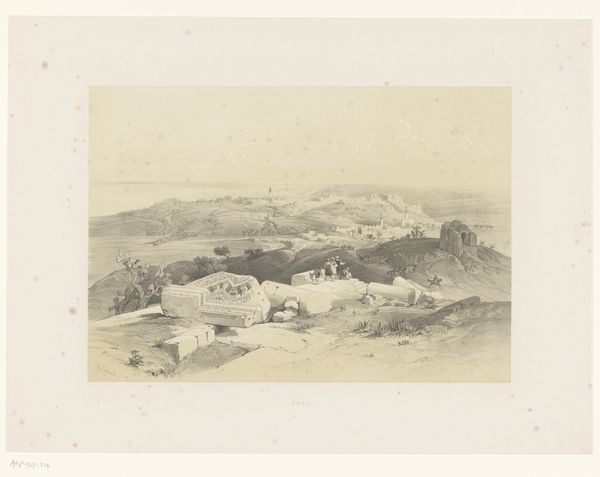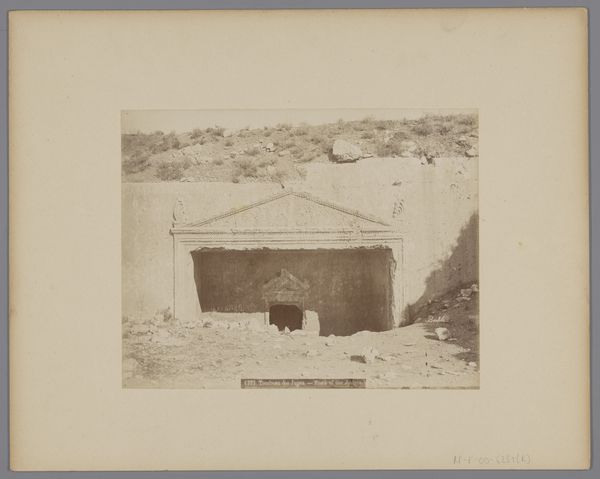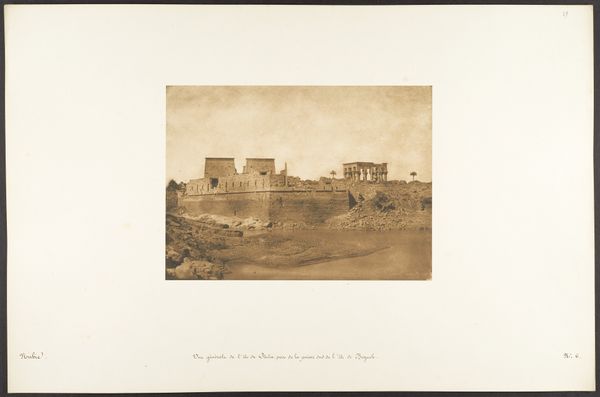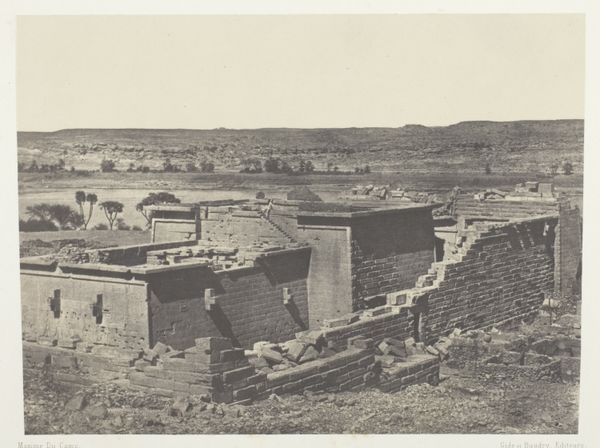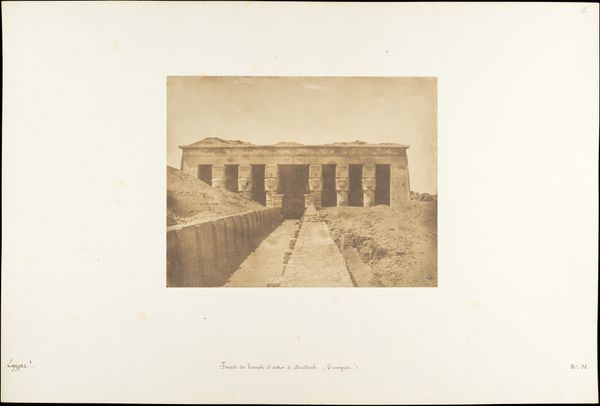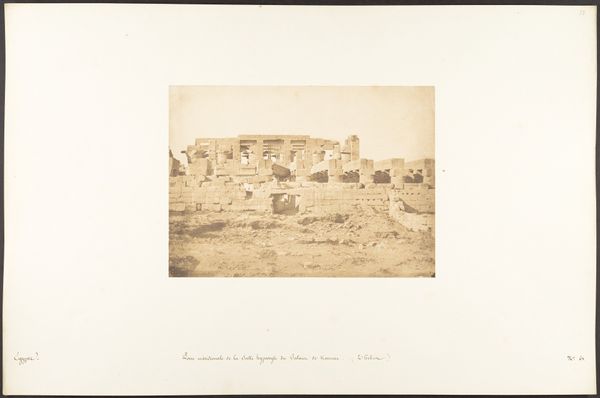
Vue générale du Temple de Kalabcheh (Talmis), prise de la montagne 1850
0:00
0:00
photography, architecture
#
landscape
#
ancient-egyptian-art
#
photography
#
ancient-mediterranean
#
architecture
Dimensions: Image: 6 9/16 × 8 11/16 in. (16.6 × 22 cm) Mount: 12 5/16 × 18 11/16 in. (31.2 × 47.5 cm)
Copyright: Public Domain
Curator: What a desolate beauty! There's something so stark and elemental about this photograph. Editor: Stark is right. Taken by Maxime Du Camp in 1850, this albumen print, titled “Vue générale du Temple de Kalabcheh (Talmis), prise de la montagne,” or “General View of the Temple of Kalabsha (Talmis), Taken from the Mountain,” portrays a ruined temple. Look closely—you can see the meticulous details of the stone work, the precise layering of each block that the artist so painstakingly documented with the help of early photographic technologies. Curator: Precisely! It’s that juxaposition - the absolute solid permanence the stone intends next to the eroding effects of time and the desert wind that really gets me. I feel the weight of history in it, but also its fragility. The image almost seems bleached. It's like witnessing a ghost. Editor: Yes, and those bleaching effects speak to the materiality. This early photographic process—albumen printing—involved coating paper with egg whites to create a smooth surface for light-sensitive silver nitrate. The process inherently involves a level of craft, of skilled labor dedicated to creating the conditions to allow an image to emerge from raw material. I’m thinking, what sort of market demanded this? Curator: A market hungry for proof, maybe? To me, it feels like the artist is asking, "What remains?" And that the human impulse towards leaving our mark in architecture will always fade... What narratives might have played out within the very stones crumbling? Editor: Well, that “fade” involves layers of social reality and political choices. Du Camp was traveling with Gustave Flaubert—ostensibly on a mission for the French government, tasked with documenting ancient sites for preservation efforts… but also flexing some serious colonial power in the process. That initial impulse behind capturing this image—it’s dripping with power dynamics. Curator: Interesting... maybe I’m more interested in what time has reclaimed—and what continues to whisper from beneath it all. In what was intended and what ended up happening. A reminder that all structures eventually surrender. Editor: Ultimately, viewing "Vue générale..." drives home how interwoven art is within systems of production, power, and the inevitable passage of time. Curator: So apt. The perfect intersection of art and time.
Comments
No comments
Be the first to comment and join the conversation on the ultimate creative platform.
